Over the course of my career I have been invited into many very large, professionally decorated homes. More often than not, these dwellings are more house than home, with few personal items that would suggest who inhabits them. Frequently, outdoor spaces are much the same; they are more yards than gardens or personal retreats. As a garden designer, I am on a mission to change that.
Enter
The Inward Garden: Creating a Place of Beauty and Meaning, a book by Julie Moir Messervy that changed my life, one that I read twice a year. Messervy begins her preface with a quote by Alfred Austin: “Show me your garden and I shall tell you what you are.” The premise of the book is that you have an image of the ideal garden in your mind that is the culmination of your collective thoughts and memories. The book shares the good news that you can create this garden in your backyard, where you can walk through it, sit in it and savor its aromas. Your garden then becomes an extension of yourself, telling a highly personal story.
What does your garden say about you? What story does it tell? Let’s look at ways to inject meaning and personality into your space, and let your garden speak to you and about you.
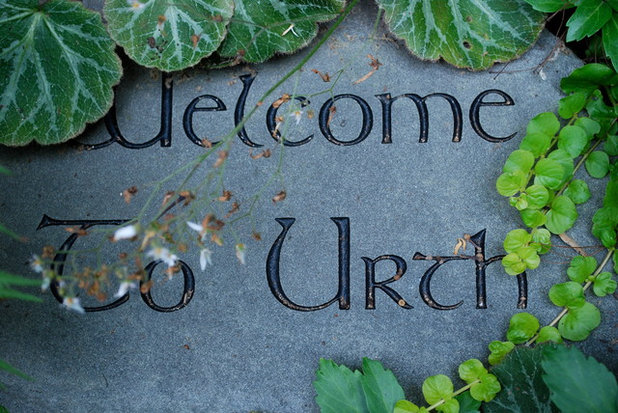
Jay Sifford Garden Design
Name Your GardenYou will find that if you name your garden, it will begin to take on a personality. Spending time in your space, feeling the sun warming your skin and hearing the breeze rustle through the trees, will begin to draw on memories of special places, events and people in your past. After all, your garden is a partnership between you and the earth.
Do you feel most comfortable in hidden-away spaces, in open fields or on overlooks where you can see all that is happening around you? The answers to questions like these will dictate what your space should become.
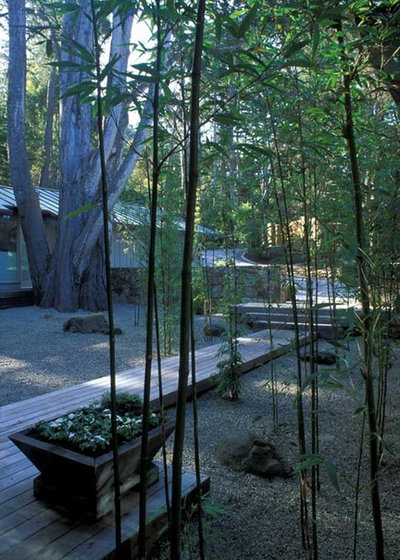
Ron Herman Landscape Architect
Find Your ArchetypeThe traveler. The traveler is full of adventure, enjoys the journey as much as the destination, is a storyteller, enjoys mystery and intrigue, and delights in the shadows and places off the beaten path.
The traveler will find deep satisfaction in a garden that celebrates the journey with winding paths, secret garden rooms hidden within tall hedges, sounds of bubbling water and perhaps wind chimes, slight aromas to conjure up all-but-forgotten memories and places to display artifacts discovered on trips abroad. A sense of rhythm, or placing similar objects in measured intervals throughout the space, will be of importance in this garden, as it will draw the visitor deeper within the space.
A small urban garden containing a hidden nook in which to read and to display mementos will also satisfy the spirit of the traveler.
More about garden “travelers”
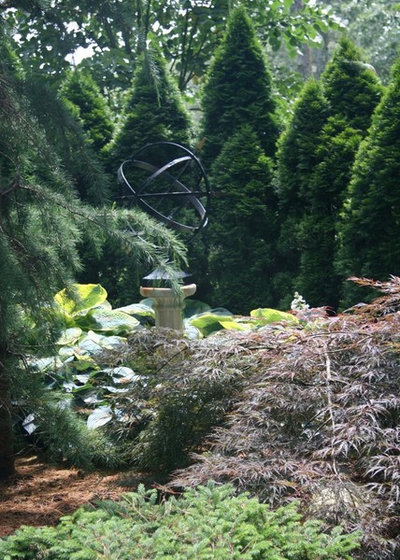
Elaine M. Johnson
The artist. A garden belonging to the artist will be in a constant state of flux, as the artist is rarely satisfied with the end product. This garden will most likely provide spaces for small vignettes that will illustrate balance, whether symmetrical or asymmetrical, with particular attention paid to textures, shapes and colors. This garden will delight the senses, with particular emphasis on the tactile. Sculpture will find prominence in the garden of an artist. The story of the artist will be found in the palette of the garden.
Since this type of garden celebrates small vignettes, the artist will be as content in a small urban garden as in a sprawling country space.
More about garden “artists”
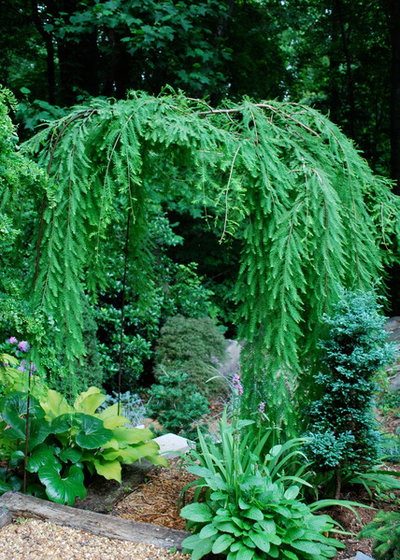
Jay Sifford Garden Design
The collector. The collector is driven by a passion for having “one of this and one of that” or the best of it all. You will frequently find the collector at a farmer’s market early on a Saturday morning, scoping out treasures from among the plant vendors, or at botanical garden plant sales. Whether the plants are weeping conifers, Japanese maples or daylilies, the garden of the collector tells a story about its owner and his or her passions.
The challenge the collector faces in creating a garden is how to bring unity and a peaceful flow to a possibly mismatched collection of plants. The answer lies in the use of repetition and mass plantings of secondary plants. A carpet of Caradonna Meadow Sage (
Salvia nemorosa ‘Caradonna’, USDA zones 4 to 9), moss or tassel ferns (
Polystichum polyblepharum, zones 6 to 8) can tame and weave together even the most unorganized collection.
Another way of dealing with a disparate collection is by employing the technique of juxtaposition. By taking plant shape, color, texture and size into consideration and pairing plants with two of these things in common, a sense of logical order will begin to emerge, while the unique qualities of each plant will still be preserved.
More about garden “collectors”
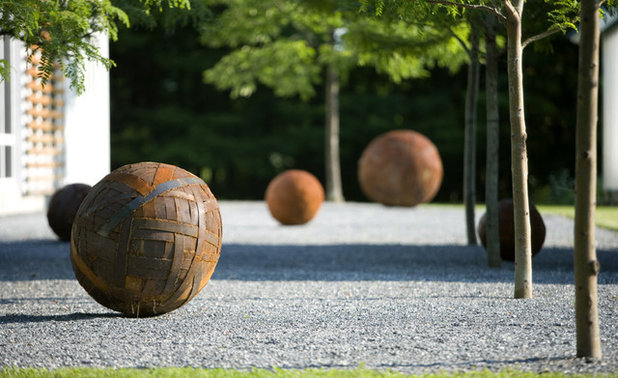
Wagner Hodgson
The philosopher. The garden of the philosopher will be sparse compared to the gardens of the traveler, the artist and the collector. Prominent items in this garden are carefully chosen for their intrinsic value, shape, texture or relationship to other items in the garden. They are never crowded; emphasis is placed on displaying each item in a way that promotes thought and introspection. The background color is frequently monochromatic. Substrates of crushed stone, aged pavers and sand are frequently preferred over turf and ground covers. All of this is done to encourage thought. The philosopher may place a premium on smaller spaces.
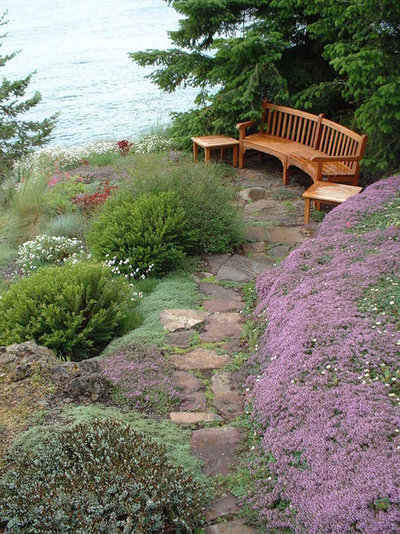
Island Gardens Company
Or the philosopher may prefer a high overlook from which he or she may survey the surrounding countryside.
More about garden “philosophers”
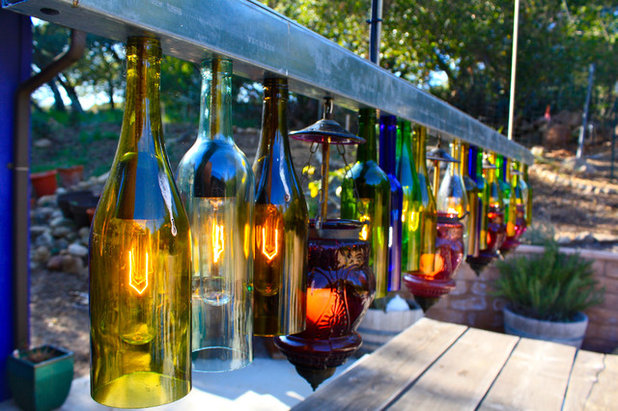
Shannon Malone
The whimsical gardener. This person is simply fun, frequently raising eccentricity to an art form. Found objects used in unorthodox ways are held in high regard by this gardener. Hunting grounds include thrift stores and flea markets. Color abounds. Each item tells the story and reflects the personality of its owner.
The challenge faced by the whimsical gardener in designing a garden is, as with the collector, how to bring continuity to the space. A dark green hedge or ground cover can earn its place in this garden as a mediator between colors, shapes and textures, giving the eye a place to rest.
More about “whimsical” gardeners
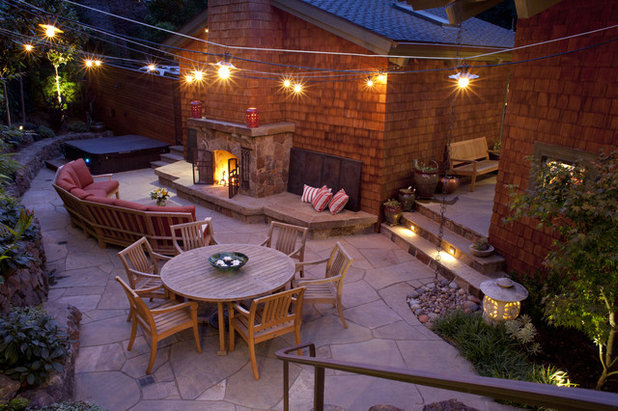
Pedersen Associates
The extrovert. This type of gardener is all about celebrating friendships and gathering people together. For this gardener plants take on the role of supporting actors for the productions that occur. Hardscaping becomes the stage; the set usually consists of colorful furniture, cushions and the quintessential grill or outdoor kitchen. The story of this garden lies in the people who gather here.
More about “extroverted” gardeners
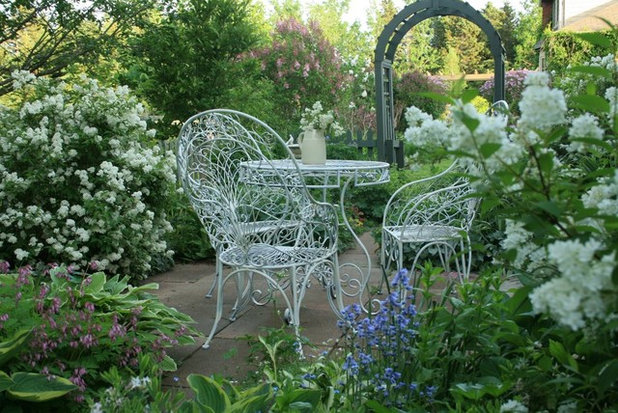
Aiken House & Gardens
The romantic. The romantic gardener embraces sentimentality, enjoys thoughtful surprises, and knows that simple fragrances and sounds conjure sensual memories from the past. He or she will have a private garden, most likely with serpentine pathways partially obscuring small seating areas with room for two. White flowers, fragrant roses and candles are likely to be found here. This gardener sees the world through rose-colored glasses and enjoys the view.
More about “romantic” gardeners
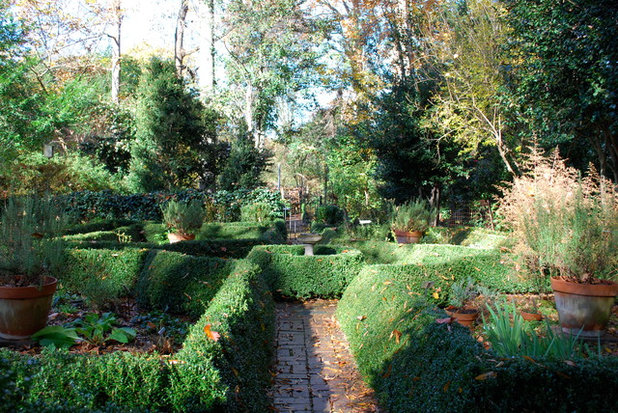
Jay Sifford Garden Design
One of the most personal gardens I know is Winghaven in Charlotte, North Carolina. This city garden was home to Elizabeth and Eddie Clarkson, who developed it over a period of three decades beginning in the 1930s. Winghaven is part formal garden, part woodland. The lot was barren of trees when the newlyweds moved into their home.
I visited Winghaven frequently when I was a child. Elizabeth devoutly loved her husband, her faith, birds and plants. She taught wild birds to eat from her hand; that made quite an impression on this 10-year-old boy.
Winghaven tells the couple’s story.
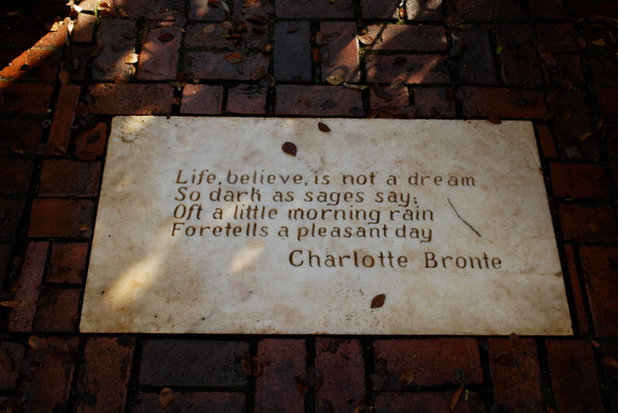
Jay Sifford Garden Design
Elizabeth and Eddie rarely bought the usual gifts for each other. Instead they collected poems and scriptures that were meaningful to them, writing them on index cards and filing them away in a box in the kitchen. For special occasions, each would secretly open the box, find a suitable verse and have a plaque made for the garden. There are dozens of them embedded in the garden hardscape.
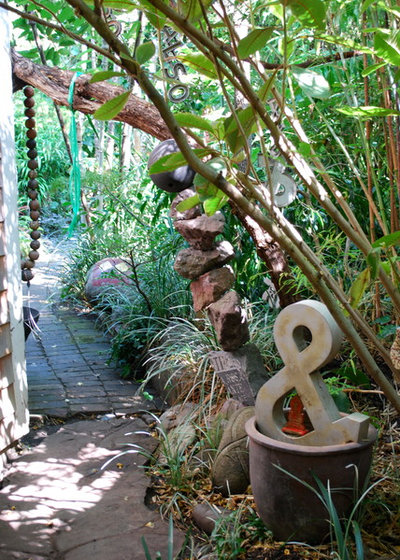
Jay Sifford Garden Design
So what kind of gardener are you? You may find that you are a combination of several of these archetypes. The process of self-discovery is what is important. In the end your garden, like this Berkeley, California, garden of artist Marcia Donahue, will be empowered to tell its own story of who you are.
Part 2: What Kind of Garden Are You? The Traveler





